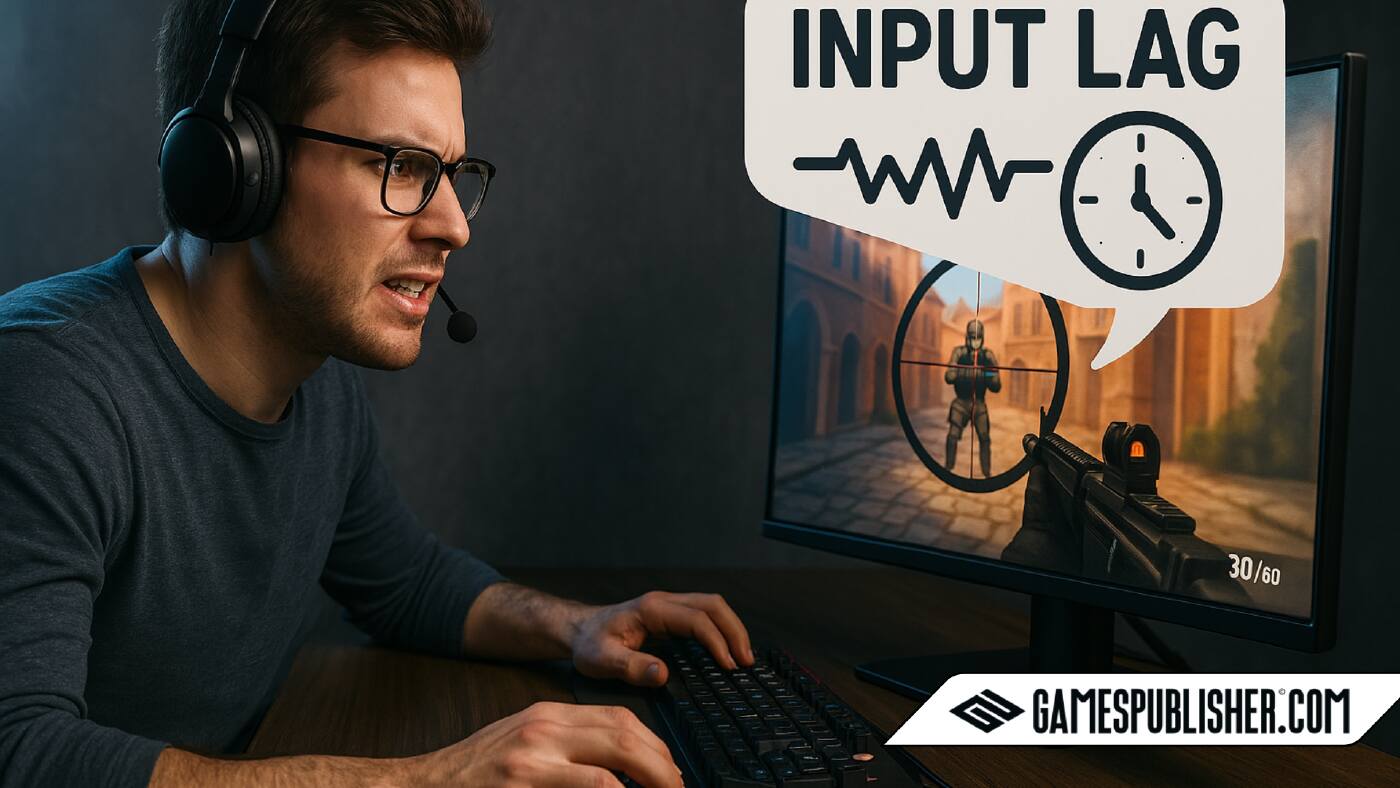Whether you’re battling in Warzone or building in Fortnite, input lag can turn a smooth gaming session into a frustrating experience. For both casual players and competitive gamers, this delay between your input and what happens on screen can drastically affect performance and gameplay enjoyment.
But what is input lag in gaming, and how do you fight back against it? This guide on Gamespublisher.com explores everything you need to know—from hardware upgrades and software tweaks to network tuning and frame rate optimization. Along the way, we’ll explain important concepts like fps meaning in gaming, network optimization, and how to use tools like the NVIDIA Reflex Latency Analyzer.
Let’s dive in and take control of your gaming performance.
Understanding Input Lag and Its Impact on Gameplay
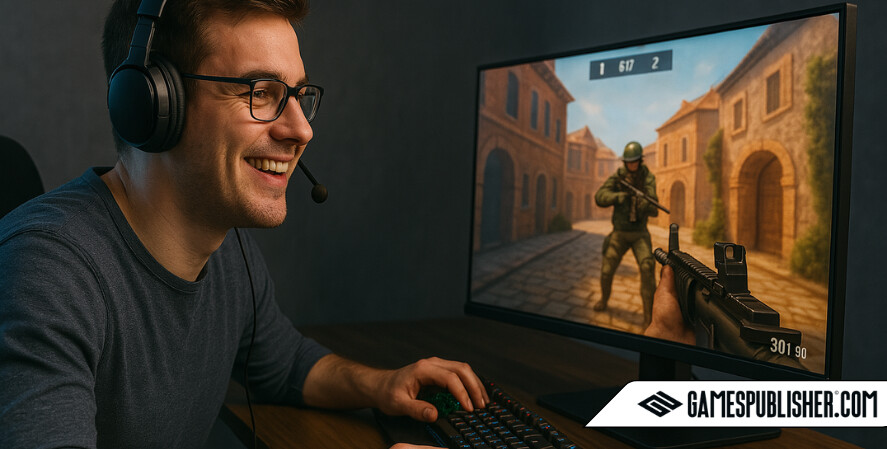
Before optimizing, it’s important to know what is input lag in gaming. In simple terms, input lag is the time delay between a command (like clicking your mouse or pressing a key) and the corresponding action appearing on screen.
In fast-paced titles—especially competitive shooters or real-time strategy games—input lag can make the difference between landing a headshot or missing entirely. Consequently, reducing this lag improves your reaction time and overall responsiveness.
However, the causes of input delay can be complex. It may stem from your display, input devices, PC hardware, network connection, or software. Therefore, solving input lag usually requires a multi-layered approach.
Minimizing Input Lag Through Hardware Enhancements
Optimizing Display Settings for Input Responsiveness
One of the most overlooked sources of input lag is the monitor. Your display’s refresh rate, response time, and synchronization technologies can all contribute to the speed—or sluggishness—of visual feedback.
- Refresh Rate: A higher refresh rate (measured in Hz) lets your screen update more often. Monitors with 144Hz or 240Hz are ideal for competitive gaming.
- Response Time: Low response times (1ms or less) help reduce motion blur and screen ghosting.
- Adaptive Sync: Technologies like G-Sync and FreeSync match your monitor’s refresh rate to your GPU’s output, reducing stutter and input delay.
To see how well your display is performing, learn how to check monitor frame rate/refresh rate via your system settings. Additionally, use a monitor frame rate test or frame rate monitor software to ensure optimal performance.
Upgrading Input Devices to Reduce Latency
Your mouse and keyboard are the first touchpoints in the input chain. If they’re laggy, everything else suffers.
- Polling Rate: Devices that support 1000Hz polling send data to your PC every millisecond, which reduces input delay significantly.
- Wired vs. Wireless: While modern wireless tech is fast, wired devices still offer the most reliable and consistent performance.
- Mechanical Switches: Mechanical keyboards generally respond faster than membrane models, which helps eliminate delay.
You can assess your setup using an input delay test, available through online tools or specialized hardware benchmarks.
Upgrading Your GPU and CPU to Lower Input Lag
Your system’s processing power has a direct impact on how quickly inputs are registered and actions are rendered.
- Graphics Card (GPU): A strong GPU allows for higher FPS, which results in more fluid and responsive gameplay.
- Processor (CPU): Games that include physics, AI, or networking benefit from a high-performance CPU that reduces bottlenecks.
Moreover, investing in capable components ensures your system can keep up with modern gaming engines, lowering input lag as a result.
Reducing Input Lag Through Software Optimization
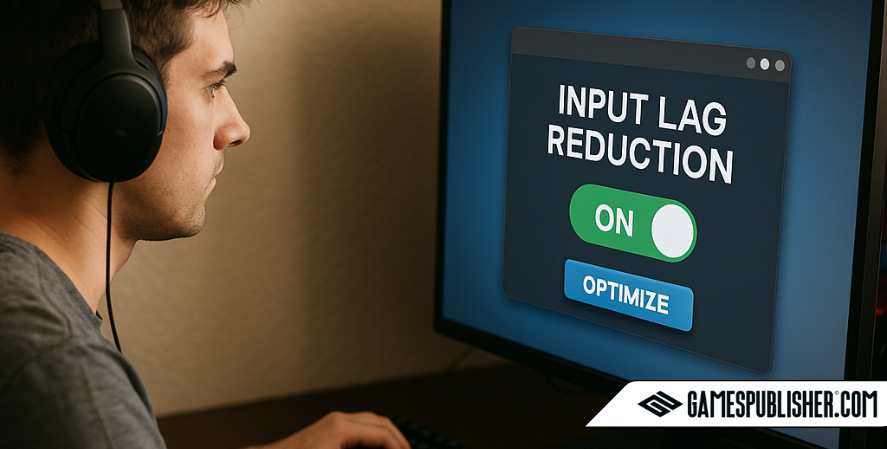
Activating Game Mode in Windows
Microsoft includes a built-in Game Mode to prioritize gaming processes. Enabling this feature can significantly reduce system-wide input lag.
Steps to activate:
- Go to Settings → Gaming → Game Mode.
- Toggle it ON.
This mode minimizes background tasks and ensures more system resources are available to your game.
Keeping Drivers and Clients Up to Date
Outdated drivers can increase input delay by introducing compatibility issues or performance bottlenecks.
- Graphics Drivers: Always install the latest from NVIDIA or AMD.
- Game Launchers: Steam, Epic Games, and other clients regularly push updates to enhance stability.
Additionally, tools like the NVIDIA Reflex Latency Analyzer and NVIDIA Reflex Analyzer can help you measure and monitor latency improvements after updates.
Disabling Background Tasks and Overlays
System clutter can be a hidden source of input lag. Background apps, especially overlays, consume CPU and memory resources.
- Disable startup apps using Task Manager.
- Turn off overlays from Discord, GeForce Experience, or Steam.
- Close browser tabs or resource-heavy software during gameplay.
These optimizations, though simple, can reduce input delay and improve your frame rate.
Network Optimization to Minimize Input Lag
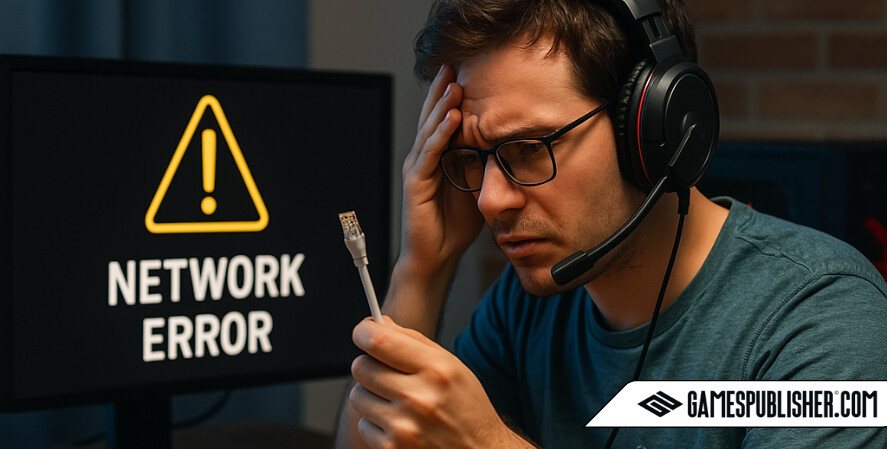
Switching to a Wired Internet Connection
While Wi-Fi is convenient, it introduces more latency and inconsistency than a wired setup.
- Ethernet provides a direct and stable connection to your router.
- Wi-Fi signals are prone to interference, especially in congested environments.
As a result, a wired connection reduces input delay caused by network instability, making your gameplay smoother.
Choosing Local Servers for Lower Latency
In online games, the physical distance between you and the server affects ping.
- Most games allow you to select your server region.
- The closer the server, the less travel time for your data.
This is a simple yet powerful step in effective network optimization.
Tweaking In-Game Network Settings
Many titles include customizable network features that can affect latency.
- Disable unnecessary features like voice chat if not in use.
- Turn off kill cams, replays, and live stats overlays.
- Limit real-time telemetry to reduce bandwidth usage.
When done correctly, these adjustments can eliminate additional input lag related to network overhead.
Improving FPS to Further Reduce Input Lag
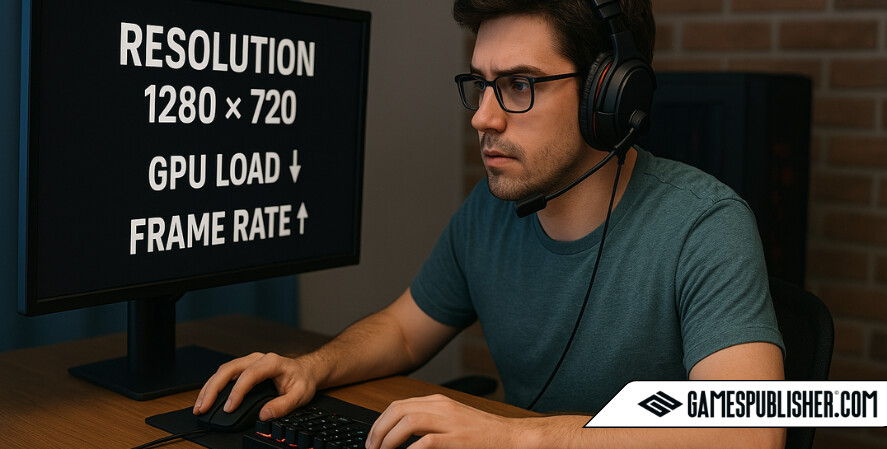
Reducing Resolution and Disabling V-Sync
Lowering your resolution reduces GPU load, and as a result, increases frame rate. This leads to more responsive controls and lower input lag.
- V-Sync prevents screen tearing but introduces additional delay.
- Turning off V-Sync or using Adaptive Sync is usually a better option for responsiveness.
Understanding what does fps mean in gaming is key here. Simply put, higher FPS results in quicker feedback from input to screen.
Utilizing Performance Presets in Games
Many games include predefined graphics settings to boost FPS.
- Fortnite’s Performance Mode reduces rendering complexity.
- Apex Legends and Warzone offer “Low” or “Competitive” settings that prioritize speed.
These settings reduce strain on your system, thereby lowering input delay and improving gameplay fluidity.
Tracking Frame Rate Using Counters
Monitoring your FPS in real time ensures your tweaks are working effectively.
- Use in-game counters or tools like MSI Afterburner.
- Try third-party frame rate monitor software for more detailed insights.
- Run a monitor frame rate test to see how your display handles rendering load.
Consistently high FPS correlates directly with reduced input lag and a better overall experience.
How Game Developers Reduce Input Lag for Players
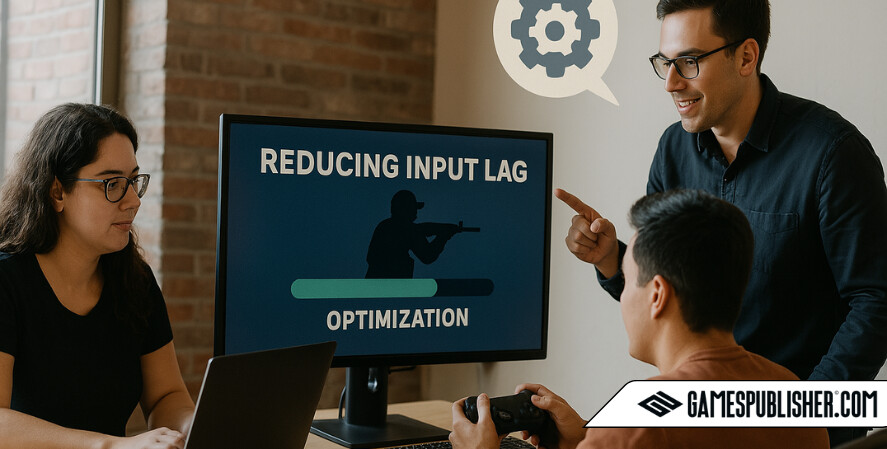
Game Engine Optimization
Developers implement advanced techniques to address input lag at the engine level.
- Frame Buffering Control: Minimizing buffered frames reduces the delay between input and display.
- Input Prediction: Algorithms can estimate player actions to “hide” lag.
- Render Pipelines: Optimized pipelines reduce time from input to final rendered frame.
These optimizations are mostly behind-the-scenes but significantly affect user experience.
Deploying Low-Latency Netcode
In multiplayer games, network optimization on the developer’s side is crucial.
- Rollback Netcode: Used in fighting games, it allows quick correction of mismatches between client and server states.
- Tick Rate: Higher server tick rates mean more frequent updates.
- Server Architecture: A well-distributed server network ensures fast and fair gameplay globally.
As a result, games feel more responsive and competitive integrity improves.
Tools for Analyzing and Minimizing Input Lag
Utilizing NVIDIA Reflex and AMD Radeon Anti-Lag
These technologies are purpose-built to reduce input lag at the driver level.
- NVIDIA Reflex: Minimizes render queue and reduces latency in supported games.
- AMD Radeon Anti-Lag: Offers similar benefits for AMD hardware users.
Enabling these settings can deliver instant responsiveness improvements without additional costs.
Testing Input Lag with Advanced Tools
Precision tools help you measure and reduce input delay even further.
- LDAT (Latency Display Analysis Tool): Measures click-to-display latency accurately.
- NVIDIA Reflex Analyzer: Built into certain monitors and peripherals for real-time analysis.
- Online Input Delay Test Tools: Good for quick tests and comparisons.
These are especially useful for developers and eSports players who require exact metrics.
Conclusion: Take Control of Your Input Lag Today
Reducing input lag is not just a tech exercise—it’s a performance strategy. By understanding its causes and applying the right mix of hardware upgrades, software tweaks, and network improvements, you can gain a tangible edge in any game.
Let’s recap:
- Upgrade your monitor, mouse, and keyboard.
- Use Game Mode and keep your drivers updated.
- Switch to wired internet and choose local servers.
- Lower resolution and disable V-Sync for higher FPS.
- Use tools like NVIDIA Reflex Latency Analyzer for precise measurements.
By implementing these tips, your system will respond faster, your games will feel smoother, and you’ll play better. Whether you’re looking to climb ranked ladders or simply want a lag-free experience, eliminating input lag is the key.
For more optimization guides, performance breakdowns, and developer insights, explore all our content on Gamespublisher.com. Game smarter. React faster. Win more.
Loading survey...

